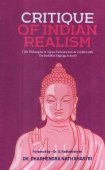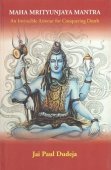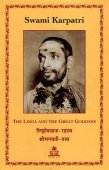Nyaya, Nyāya: 27 definitions
Introduction:
Nyaya means something in Hinduism, Sanskrit, Jainism, Prakrit, the history of ancient India, Marathi, Hindi. If you want to know the exact meaning, history, etymology or English translation of this term then check out the descriptions on this page. Add your comment or reference to a book if you want to contribute to this summary article.
Alternative spellings of this word include Nyay.
In Hinduism
Purana and Itihasa (epic history)
Source: Cologne Digital Sanskrit Dictionaries: The Purana IndexNyāya (न्याय).—A Śāstra; a servant of the Veda;1 learnt by Kṛṣṇa and Balarāma;2 by Asuras.3
- 1) Matsya-purāṇa 3. 4; 53. 5; Vāyu-purāṇa 2. 33; 61. 78; 104. 85; Viṣṇu-purāṇa III. 6. 27; V. 1. 38.
- 2) Bhāgavata-purāṇa X. 45. 34.
- 3) Brahmāṇḍa-purāṇa II. 35. 87; IV. 12. 17.
Nyāya (न्याय).—In the Matsya-Purāṇa it is pointed out that Nyāya-vidyā along with the Vedas, proceed from the mouth of Brahmā (Matsya-purāṇa, 3,4).
Source: Shodhganga: A study of Nyāya-vaiśeṣika categories (mahabharata)Nyāya (न्याय).—Many tenets of Nyāya are found in the Śānti-parva of the Mahābhārata (Sāntiparva, 21.22). However, there were many teachers who propounded Nyāya philosophy. It is said in the Ādiparva of the Mahābhārata that there were a number of sages in the hermitage of Kāśyapa who knew true meanings of demonstration, refutation and conclusion (Ādiparva, 70.42). These sages were the early teachers of the Nyāya-śāstra. But nothing is known about these early teachers.

The Purana (पुराण, purāṇas) refers to Sanskrit literature preserving ancient India’s vast cultural history, including historical legends, religious ceremonies, various arts and sciences. The eighteen mahapuranas total over 400,000 shlokas (metrical couplets) and date to at least several centuries BCE.
Natyashastra (theatrics and dramaturgy)
Source: Wisdom Library: Nāṭya-śāstraNyāya (न्याय, “ways”) refers to a “way of using weapons” (releasing missiles), according to the Nāṭyaśāstra chapter 11. Accordingly, “In these nyāyas arising out of various cārīs (‘dance-steps’), actors should walk about on the stage at the time of using weapons. The nyāyas (‘way’) are so calle* because fights on the stage are carried on with the aṅgahāras relating to the nyāyas and arising out of them.”
There are four different kinds of nyāya defined:
- bhārata,
- sāttvata,
- vārṣagaṇya,
- kaiśika.

Natyashastra (नाट्यशास्त्र, nāṭyaśāstra) refers to both the ancient Indian tradition (shastra) of performing arts, (natya—theatrics, drama, dance, music), as well as the name of a Sanskrit work dealing with these subjects. It also teaches the rules for composing Dramatic plays (nataka), construction and performance of Theater, and Poetic works (kavya).
Vyakarana (Sanskrit grammar)
Source: Wikisource: A dictionary of Sanskrit grammarNyāya (न्याय).—Maxim, a familiar or patent instance quoted to explain similar cases; cf. the words अग्नौकरवाणि-न्याय (agnaukaravāṇi-nyāya) M. Bh. on P. II 2.24, अपवाद-न्याय (apavāda-nyāya) M. Bh. on P. I. 3.9, अविरवि-कन्याय (aviravi-kanyāya) M. Bh. on P. IV. 1. 88, 89, IV. 2.60, IV.3.131, V. 1.7, 28, VI 2. 11 ; कुम्भीधान्यन्याय (kumbhīdhānyanyāya) M.Bh. on P.I. 3.7, कूपखानकन्याय (kūpakhānakanyāya) M.Bh. I. 1. Āhnika 1, दण्डिन्याय (daṇḍinyāya) M.Bh. on P. VIII.2.83, नष्टाश्वदग्धरथन्याय (naṣṭāśvadagdharathanyāya) M. Bh. on P. I.1.50 प्रधानाप्रधानन्याय (pradhānāpradhānanyāya) M.Bh.on P.II.1.69,VI. 3. 82, प्रासादवासिन्याय (prāsādavāsinyāya) M. Bh. on P.I . 1.8, मांसकण्टकन्याय (māṃsakaṇṭakanyāya) M.Bh. on P.I.2.39, लट्वानुकर्षणन्याय (laṭvānukarṣaṇanyāya) M.Bh. on Siva Sūtra 2 Vārt. 5, शालिपलालन्याय (śālipalālanyāya) M.Bh on P. 1.2.39,सूत्रशाटकन्याय (sūtraśāṭakanyāya) M.Bh. on P. I.3. 12. The word came to be used in the general sense of Paribhāsās or rules of interpretation many of which were based upon popular maxims as stated in the word लोकन्यायसिद्ध (lokanyāyasiddha) by Nāgesa. Hemacandra has used the word न्याय (nyāya) for Paribhāsa-vacana. The word is also used in the sense of a general rule which has got some exceptions, cf. न्यायैर्मिश्रानपवादान् प्रतीयात् (nyāyairmiśrānapavādān pratīyāt) R. Pr. which lays down the direction that 'one should interpret the rule laying down an exception along with the general rule'.

Vyakarana (व्याकरण, vyākaraṇa) refers to Sanskrit grammar and represents one of the six additional sciences (vedanga) to be studied along with the Vedas. Vyakarana concerns itself with the rules of Sanskrit grammar and linguistic analysis in order to establish the correct context of words and sentences.
Nyaya (school of philosophy)
Source: Shodhganga: A study of Nyāya-vaiśeṣika categoriesNyāya (न्याय) system is one of the six orthodox systems of Indian Philosophy. The oldest name of Nyāya is Ānvikṣikī (the science of inquiry) ascribed to Gotama or Gautama. In later times Ānvikṣikī has come to be denoted as Nyāya-śāstra (the science of true reasoning). The Nyāya system is atomistic, pluralistic and realistic. The meaning of the term Nyāya is right or justice.
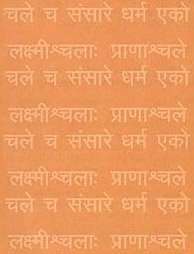
Nyaya (न्याय, nyaya) refers to a school of Hindu philosophy (astika), drawing its subject-matter from the Upanishads. The Nyaya philosophy is known for its theories on logic, methodology and epistemology, however, it is closely related with Vaisheshika in terms of metaphysics.
Nirukta (Sanskrit etymology)
Source: Shodhganga: A study of Nyāya-vaiśeṣika categories (nirukta)Nyāya (न्याय).—The meaning of the term Nyāya is right or justice. Etymologically this word means ‘that by which man is guided’ (nīyate aneneti nyāyaḥ). “Nyāyaśāstra is therefore the science of right judgement or true reasoning”.
Nirukta (निरुक्त) or “etymology” refers to the linguistic analysis of the Sanskrit language. This branch studies the interpretation of common and ancient words and explains them in their proper context. Nirukta is one of the six additional sciences (vedanga) to be studied along with the Vedas.
Dharmashastra (religious law)
Source: Shodhganga: A study of Nyāya-vaiśeṣika categories (dharma)Nyāya (न्याय).— It is stated in the Yājñavalkyasmṛti that Nyāya is included in the fourteen principal branches of learning.
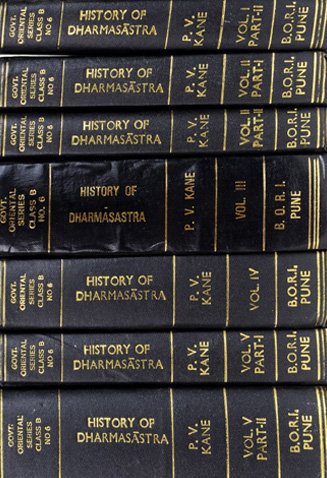
Dharmashastra (धर्मशास्त्र, dharmaśāstra) contains the instructions (shastra) regarding religious conduct of livelihood (dharma), ceremonies, jurisprudence (study of law) and more. It is categorized as smriti, an important and authoritative selection of books dealing with the Hindu lifestyle.
Vaishnavism (Vaishava dharma)
Source: Pure Bhakti: Brhad BhagavatamrtamNyāya (न्याय) refers to:—Logic, reasoning; the philosophy dealing with a logical analysis of reality, also known as nyāya-darśana. (cf. Glossary page from Śrī Bṛhad-bhāgavatāmṛta).

Vaishnava (वैष्णव, vaiṣṇava) or vaishnavism (vaiṣṇavism) represents a tradition of Hinduism worshipping Vishnu as the supreme Lord. Similar to the Shaktism and Shaivism traditions, Vaishnavism also developed as an individual movement, famous for its exposition of the dashavatara (‘ten avatars of Vishnu’).
General definition (in Hinduism)
Source: WikiPedia: HinduismNyāya is the name for one of the six orthodox or astika schools of Hindu philosophy—specifically the school of logic. The Nyaya school of philosophical speculation is based on texts known as the Nyaya Sutras, which were written by Aksapada Gautama from around the 2nd century BCE.
The Nyaya metaphysics recognizes sixteen padarthas or categories and includes all six (or seven) categories of the Vaisheshika in the second one of them, called prameya. These sixteen categories are
- pramāṇa (valid means of knowledge),
- prameya (objects of valid knowledge),
- saṃśaya (doubt),
- prayojana (aim),
- dṛṣṭānta (example),
- siddhānta (conclusion),
- avayava (members of syllogism),
- tarka (hypothetical reasoning),
- nirṇaya (settlement),
- vāda (discussion),
- jalpa (wrangling),
- vitaṇḍā (cavilling),
- hetvābhāsa (fallacy),
- chala (quibbling),
- jāti (sophisticated refutation)
- and nigrahasthāna (point of defeat).
Etymology: Nyāya (Sanskrit ny-āyá, literally "recursion", used in the sense of "syllogism, inference");
In Jainism
Jain philosophy
Source: archive.org: Anekanta Jaya Pataka of Haribhadra SuriNyāya (न्याय) refers to an “apposite illustration”, as occurring in the Anekāntajayapatākā-prakaraṇa, a Śvetāmbara Jain philosophical work written by Haribhadra Sūri.—[Cf. Vol. I, P. 56, ll 6-7]—‘Nyāya’ is differently translated by different scholars e.g. an “apposite illustration”, a “popular medium”, an “inference from familiar instances” and an “idiomatic expression”. There is no exact equivalent in the English language for it. A nyāya is more concise than a proverb and has at the same time all the force of the latter. It is based upon experience. We come across it in works on grammar, philosophy and rhetoric.
-
India history and geography
Source: Cologne Digital Sanskrit Dictionaries: Indian Epigraphical GlossaryNyāya.—cf. niyāyam (SII 2), an appointment or pledge. (SITI), body or association of persons having the same duties or interests. Cf. gardabha-cāṇḍāla-nyāyena (LP), ‘like a donkey or a Caṇḍāla’. Cf. khaṇḍa-badarīphala-nyāyena (LP), ‘like sugar and the badarī fruit’. Cf. śāka-phalaka-nyāyena (LP), ‘like vegetables and fruits’. Cf. vṛddhi-phala-bhoga-nyāya (LP), principle of enjoying the interest of a deposit; also cf. gṛhasya bhāḍakaṃ na hi; drammāṇāṃ vyājaṃ na hi; eṣa vṛddhi-phala-bhoga-nyāyaḥ. Note: nyāya is defined in the “Indian epigraphical glossary” as it can be found on ancient inscriptions commonly written in Sanskrit, Prakrit or Dravidian languages.
Source: Singhi Jain Series: Ratnaprabha-suri’s Kuvalayamala-katha (history)Nyāya (न्याय) refers to one of the topics taught at the Educational institutions in ancient India, which attracted students from near and distant countries, as depicted in the Kathās (narrative poems) such as Uddyotanasūri in his 8th-century Kuvalayamālā (a Prakrit Campū, similar to Kāvya poetry).—Page 150.17 f. & 151.1-5: There is described an educational institution which included students from Lāṭa, Karṇāṭaka, Mālava, Kaṇṇujja, Godāvarī (Nasik), Mahārāṣṭra, Saurāṣṭra, Śrīkaṇṭha (Thanesvar) and Sindha. The courses of study comprised [e.g., Nyāya] [...]. At another place (151.6-11) the prince came across persons who cultivated the seventy-two arts and sixty-four sciences, [...].

The history of India traces the identification of countries, villages, towns and other regions of India, as well as mythology, zoology, royal dynasties, rulers, tribes, local festivities and traditions and regional languages. Ancient India enjoyed religious freedom and encourages the path of Dharma, a concept common to Buddhism, Hinduism, and Jainism.
Languages of India and abroad
Marathi-English dictionary
Source: DDSA: The Molesworth Marathi and English Dictionarynyāya (न्याय).—m (S) Fitness, rightness, propriety; whence, commonly, justice or equity. 2 The Nyaya doctrine, logical philosophy. 3 A maxim, a rule, a law, a general principle, an axiom; and thus, commonly, an adage or a proverb. nyāya sāṅgaṇēṃ To make complaint and seek redress; to call for justice. Ex. mhaṇē tukayānēṃ sādhilā dāvā || nyāya sāṅgāvā kavaṇāsīṃ ||.
Source: DDSA: The Aryabhusan school dictionary, Marathi-Englishnyāya (न्याय).—m Fitness, propriety; justice or equity. The Nyaya doctrine. A maxim, a rule, a law. nyāya sāṅgaṇēṃ To make a complaint and seek redress.
Marathi is an Indo-European language having over 70 million native speakers people in (predominantly) Maharashtra India. Marathi, like many other Indo-Aryan languages, evolved from early forms of Prakrit, which itself is a subset of Sanskrit, one of the most ancient languages of the world.
Sanskrit dictionary
Source: DDSA: The practical Sanskrit-English dictionaryNyaya (न्यय).—Loss, destruction; decay.
Derivable forms: nyayaḥ (न्ययः).
--- OR ---
Nyāya (न्याय).—[niyanti anena; ni-i ghañ]
1) Method, manner, way, rule, system, plan; अधार्मिकं त्रिभिर्न्यायैर्निगृह्णीयात् प्रयत्नतः (adhārmikaṃ tribhirnyāyairnigṛhṇīyāt prayatnataḥ) Manusmṛti 8.31; अनुक्ते हि न्याये न प्रतीमोऽर्थान्तरम् (anukte hi nyāye na pratīmo'rthāntaram) ŚB. on MS.6. 2.5; तस्मान्नावस्थितो न्यायः प्रत्युद्ध्रियेत (tasmānnāvasthito nyāyaḥ pratyuddhriyeta) ŚB. on MS.6.2.1. ननु लिङ्गमसाधकं, न्याय उच्यतां यस्यैतद् द्योतकमिति (nanu liṅgamasādhakaṃ, nyāya ucyatāṃ yasyaitad dyotakamiti) ŚB. on MS.6. 2.3.
2) Fitness, propriety, decorum; न्यायाधारा हि साधवः (nyāyādhārā hi sādhavaḥ) Kirātārjunīya 11.3.
3) Law, justice, virtue, equity, righteousness, honesty; यान्ति न्यायप्रवृत्तस्य तिर्यञ्चोऽपि सहायताम् (yānti nyāyapravṛttasya tiryañco'pi sahāyatām) A. R.1.4.
4) A law-suit, legal proceeding.
5) Judicial sentence, judgment.
6) Policy, good government.
7) Likeness, analogy.
8) A popular maxim, an apposite illustration, illustration, as दण्डापूपन्याय, काकतालीयन्याय, घुणाक्षरन्याय (daṇḍāpūpanyāya, kākatālīyanyāya, ghuṇākṣaranyāya) &c.; see Appendix.
9) A Vedic accent; न्यायैस्त्रिभिरुदीर्णम् (nyāyaistribhirudīrṇam) Kumārasambhava 2.12. (Malli. takes nyāya to mean svara; but it is quite open, in our opinion, to take nyāya in the sense of 'a system' or 'way'; 'which are manifested in three systems, i. e. ṛk, yajus and sāman'); न्यायगर्भद्विजाः (nyāyagarbhadvijāḥ) Bhartṛhari 3. 55.
1) (In gram.) A universal rule.
11) A system of Hindu philosophy founded by the sage Gautama.
12) The science of logic, logical philosophy.
13) A complete argument or syllogism (consisting of five members; i. e. pratijñā, hetu, udāharaṇa, upanaya and nigamana).
14) An epithet of Viṣṇu. (nyāyena ind. in the way of, after the manner or analogy of; badhirānmandakarṇaḥ śreyāniti nyāyena &c.).
Derivable forms: nyāyaḥ (न्यायः).
Source: Cologne Digital Sanskrit Dictionaries: Shabda-Sagara Sanskrit-English DictionaryNyaya (न्यय).—m.
(-yaḥ) Loss, expense, waste, destruction. E. ni before i to go, aff. ac.
--- OR ---
Nyāya (न्याय).—m.
(-yaḥ) 1. Propriety, fitness. 2. The Nyaya doctrine, logic, logical philosophy. 3. Apposite illustration. 4. A complete argument or syllogism. 5. Policy, good government. 6. Method, way, manner, plan, rule. 7. Virtue, honesty. 8. Justice, law. 9. A law-suit. 12. Judgment. 13. A universal rule, (In gram.) 14. Likeness analogy. 15. A vedic accent. E. ni certainly, iṇa to go, aff. bhāvakaraṇādau ghañ.
--- OR ---
Nyāya (न्याय) or Nyāyya.—mfn.
(-yaḥ-yā-yaṃ) Right, proper, fit. E. nyāya, and yat aff.
Source: Cologne Digital Sanskrit Dictionaries: Benfey Sanskrit-English DictionaryNyāya (न्याय).—i. e. ni-i + a, m. 1. Rule. 2. Method, manner, [Mānavadharmaśāstra] 8, 310; [Daśakumāracarita] in
Nyāya (न्याय).—[masculine] norm, standard (lit. that to which a thing goes back); rule, axiom, method; manner, way, [especially] the right way, fitness, propriety; law-suit, judicial sentence, judgment; logical argument, syllogism, [Name] of a phil. system. — Instr. & [ablative] in the right way, regularly, duly (also °—); in the way or after the manner of (—°).
Source: Cologne Digital Sanskrit Dictionaries: Monier-Williams Sanskrit-English Dictionary1) Nyaya (न्यय):—[=ny-aya] m. ([from] 4. nī) going off, destruction, loss, waste, [Pāṇini 3-3, 37 [Scholiast or Commentator]; cf. Lexicographers, esp. such as amarasiṃha, halāyudha, hemacandra, etc.]
2) Nyāya (न्याय):—[=ny-āya] m. ([from] 4. nī) that into which a thing goes back id est. an original type, standard, method, rule, ([especially]) a general or universal rule, model, axiom, system, plan, manner, right or fit manner or way, fitness, propriety, [Taittirīya-saṃhitā; Brāhmaṇa; Manu-smṛti; Mahābhārata] etc. (nyāyena ind. and yāt ind. either ‘in the right manner, regularly, duly’, or ifc. ‘after the manner of, by way of’)
3) [v.s. ...] a lawsuit, legal proceeding, judicial sentence, judgement, [Mṛcchakaṭikā; Pañcatantra]
4) [v.s. ...] a logical or syllogistic argument or inference (consisting of a combination of enthymeme and syllogism, and so having, according to the Naiyāyikas 5 members, viz. pratijñā, hetu, udāharaṇa, upanaya, nigamana, or according to the Vedāntins 3 members)
5) [v.s. ...] a system of philosophy delivered by Gotama or Gautama (it is one of the six darśanas q.v., and is perhaps so called, because it ‘goes into’ all subjects physical and metaphysical according to the above syllogistic method treated of in one division of the system; its branch is called Vaiśeṣika)
6) [v.s. ...] likeness, analogy, a popular maxim or apposite illustration (cf. kākākṣi-, ghuṇākṣara-, daṇḍāpūpa. etc.)
Source: Cologne Digital Sanskrit Dictionaries: Yates Sanskrit-English Dictionary1) Nyaya (न्यय):—(yaḥ) 1. m. Loss, expense.
2) Nyāya (न्याय):—(yaḥ) 1. m. Propriety; a system of philosophy like Aristotle's; a syllogism; policy; justice.
3) [(yyaḥ-yyā-yyaṃ) a.] Right, proper.
Source: DDSA: Paia-sadda-mahannavo; a comprehensive Prakrit Hindi dictionary (S)Nyāya (न्याय) in the Sanskrit language is related to the Prakrit word: Ṇāya.
[Sanskrit to German]
Sanskrit, also spelled संस्कृतम् (saṃskṛtam), is an ancient language of India commonly seen as the grandmother of the Indo-European language family (even English!). Closely allied with Prakrit and Pali, Sanskrit is more exhaustive in both grammar and terms and has the most extensive collection of literature in the world, greatly surpassing its sister-languages Greek and Latin.
Hindi dictionary
Source: DDSA: A practical Hindi-English dictionaryNyāya (न्याय) [Also spelled nyay]:—(nm) justice; fairness; a popular maxim or apposite illustration (as [ghuṇākṣara nyāya]); logic; ~[kartā] a judge, one who sits in judgment; ~[niṣṭha]; just, fair, equitable- ~[niṣṭhatā] justness, fairness, equitability; —[patha] just/fair/equitablecourse; ~[para] just, fair, equitable; ~[paratā] justness, fairness, equitability; ~[parāyaṇa] just, fair, equitable; ~[parāyaṇatā] justness, fairness, equitability; ~[pālikā] see [nyāyāṃga; ~pīṭha] bench; ~[priya] just, fair, equitable; hence ~[priyatā] (nf); ~[vādī] an attorney; just/fair/equitable in utterance; ~[śāstra] jurisprudence; ~[śāstrī] jurisprudent; ~[śīla] see ~[para; ~saṃgata] just, fair, equitable; —[sabhā] a court of law; bench.
...
Kannada-English dictionary
Source: Alar: Kannada-English corpusNyāya (ನ್ಯಾಯ):—
1) [noun] a general, universal rule; an axiom.
2) [noun] a rule; a regulation.
3) [noun] that which is right, proper or appropriate; propriety.
4) [noun] conformity with what is proper or fitting; the quality of being righteous; rectitude; justice.
5) [noun] impartiality; fairness.
6) [noun] reward or penalty as deserved; decision of a law court; just deserts.
7) [noun] one of six systems of Indian philosophy, propounded by the sage Gautama.
8) [noun] the science or philosophy of law; jurisprudence.
9) [noun] the science of correct reasoning; science which describes relationships among propositions in terms of implication, contradiction, contrariety, conversion, etc.; logic.
10) [noun] all the rules of conduct established and enforced by the authority, legislation or custom of a given community, state, etc.; law.
11) [noun] concisely expressed principle or rule of conduct or a statement of a general truth; a maxim.
12) [noun] a kind of archaic tax.
13) [noun] (fig.) an illogical argument; quarrelsomeness.
Kannada is a Dravidian language (as opposed to the Indo-European language family) mainly spoken in the southwestern region of India.
See also (Relevant definitions)
Partial matches: Aya.
Starts with (+300): Nyaya-karanika, Nyaya-vada, Nyayabahira, Nyayabele, Nyayabhasa, Nyayabhashya, Nyayabhashyakara, Nyayabhaskara, Nyayabhushana, Nyayabindu, Nyayabindutika, Nyayabodhini, Nyayacandrika, Nyayacara, Nyayacarya, Nyayachandrika, Nyayachara, Nyayacintamani, Nyayacisutrivarttika, Nyayacudamani.
Ends with (+163): Agnaukaravaninyaya, Ajagajanyaya, Akashamushtihanananyaya, Alikiranyaya, Amdhalavukanyaya, Amdhapamgunyaya, Andhacatakanyaya, Andhadarpananyaya, Andhagajanyaya, Andhaparamparanyaya, Antaragarbhininyaya, Anyaya, Apacchedananyaya, Apacchedanyaya, Apachchhedananyaya, Apachchhedanyaya, Apavadanyaya, Aranyanyaya, Ardhajaratiyanyaya, Arthikanyaya.
Full-text (+1957): Nyayya, Naiyaya, Nyayasamgrahadipika, Nyayakrodapattra, Nyayaratnaprakarana, Nyayaratnatika, Nyayasaratika, Nyayasiddhantadipa, Nyayasiddhantamuktavali, Nyayasutra, Nyayadipika, Nyayamala, Nyayaratnakara, Nyayasaravali, Nyayabhushana, Nyayakusumanjaliviveka, Nyayaratnamala, Nyayavivekadipika, Nyayasaradipika, Nyayamakarandavivecini.
Relevant text
Search found 138 books and stories containing Nyaya, Nyāya, Ny-aya, Ny-āya; (plurals include: Nyayas, Nyāyas, ayas, āyas). You can also click to the full overview containing English textual excerpts. Below are direct links for the most relevant articles:
Natyashastra (English) (by Bharata-muni)
Part 1 - The Present Work < [Introduction, part 1]
Buddha-nature (as Depicted in the Lankavatara-sutra) (by Nguyen Dac Sy)
2. Hindu Philosophical Systems (c) Nyāya < [Chapter 3 - The Laṅkāvatārasūtra and Hindu Philosophy]
2. Six Hindu Philosophical Systems (Introduction) < [Chapter 3 - The Laṅkāvatārasūtra and Hindu Philosophy]
2. Hindu Philosophical Systems (d) Vaiśeṣika < [Chapter 3 - The Laṅkāvatārasūtra and Hindu Philosophy]
Prasthanatrayi Swaminarayan Bhashyam (Study) (by Sadhu Gyanananddas)
2.3. Nyāya Darśana < [Chapter 1 - Introduction]
1.3. Pramāṇas: Basic Introduction < [Chapter 2 - Analysis on the Basis Of Epistemology]
Introduction (spirituality and philosophy) < [Chapter 4 - Analysis on the Basis of Spiritual Endeavour]
A comparative study between Buddhism and Nyaya (by Roberta Pamio)
1. Nyāya: A Brief Introduction < [Chapter 4 - The Nyāya Theory of Perception]
Review of Literature < [Introduction]
Anumana in Indian Philosophy (by Sangita Chakravarty)
Vedic schools (1): The Nyāya-Vaiśeṣika < [Chapter 1 - Introduction]
(A). Meaning of Anumāna (in Nyāya-Vaiśeṣika Philosophy) < [Chapter 2 - Treatment of Anumāna in Nyāya-Vaiśeṣika Philosophy]
(D). Vyāpti and Pakṣadharmatā < [Chapter 2 - Treatment of Anumāna in Nyāya-Vaiśeṣika Philosophy]
Philosophy of Charaka-samhita (by Asokan. G)
Dialectical terms (11): Doubt (saṃśaya) < [Chapter 7 - Logic and Dialectical Speculations]
Dialectical terms (23): Fallacies of reason (ahetu) < [Chapter 7 - Logic and Dialectical Speculations]
Knowledge (pramāṇa) [in Charaka philosophy] < [Chapter 6 - Source of Knowledge (pramāṇa)]
Related products
